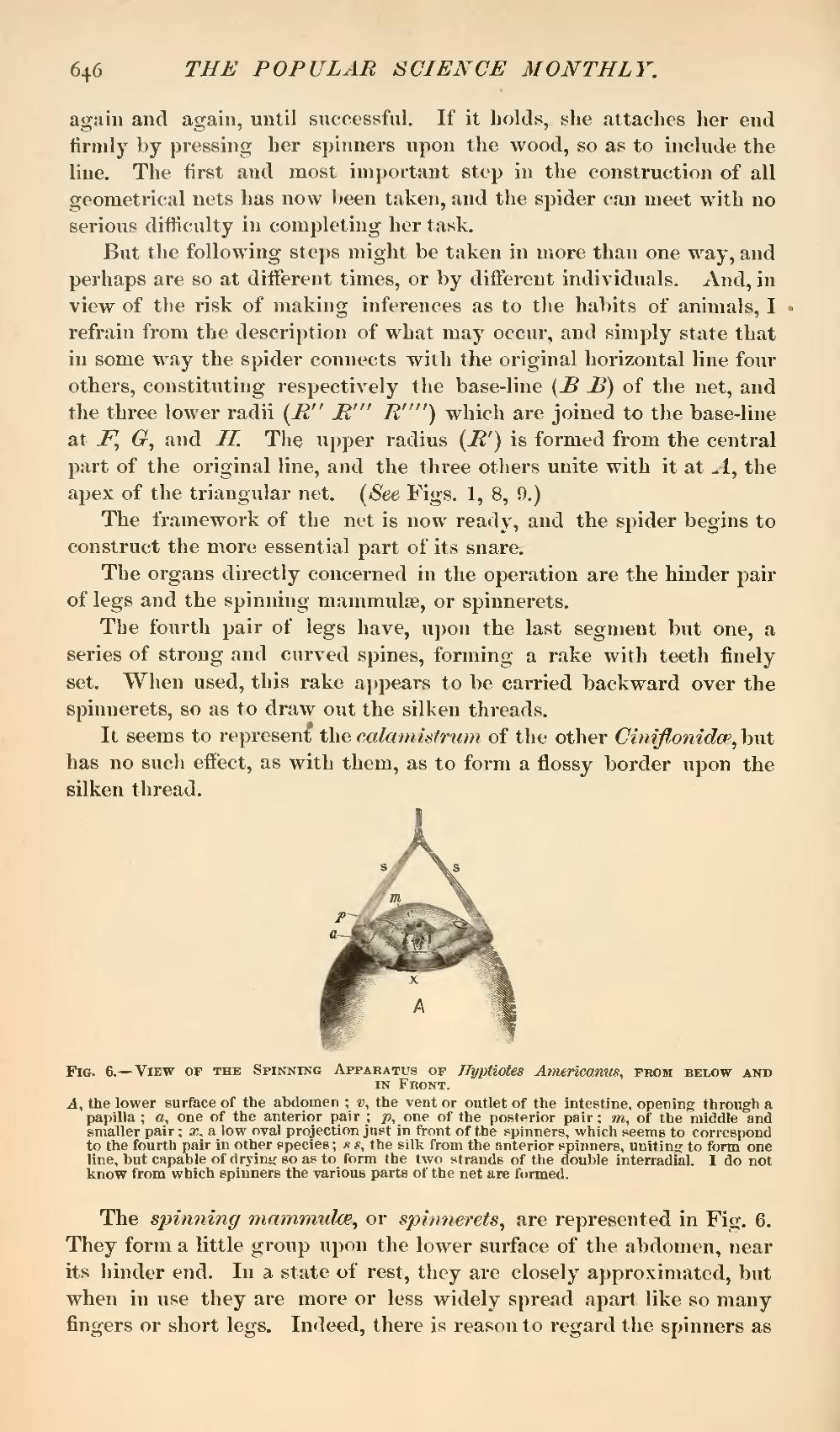again and again, until successful. If it holds, she attaches her end firmly by pressing her spinners upon the wood, so as to include the line. The first and most important step in the construction of all geometrical nets has now been taken, and the spider can meet with no serious difficulty in completing her task.
But the following steps might be taken in more than one way, and perhaps are so at different times, or by different individuals. And, in view of the risk of making inferences as to the habits of animals, I refrain from the description of what may occur, and simply state that in some way the spider connects with the original horizontal line four others, constituting respectively the base-line (B B) of the net, and the three lower radii (R''R'''R'''')which are joined to the base-line at F, G, and H. The upper radius (R') is formed from the central part of the original line, and the three others unite with it at A, the apex of the triangular net. (See Figs. 1, 8, 9.)
The framework of the net is now ready, and the spider begins to construct the more essential part of its snare.
The organs directly concerned in the operation are the hinder pair of legs and the spinning mammulæ, or spinnerets.
The fourth pair of legs have, upon the last segment but one, a series of strong and curved spines, forming a rake with teeth finely set. When used, this rake appears to be carried backward over the spinnerets, so as to draw out the silken threads.
It seems to represent the calamistrum of the other Ciniflonidæ, but has no such effect, as with them, as to form a flossy border upon the silken thread.

Fig. 6.—View of the Spinning Apparatus of Hyptiotes Americanus, from below and in Front.
A, the lower surface of the abdomen; v, the vent or outlet of the intestine, opening through a papilla; a, one of the anterior pair; p, one of the posterior pair; m, of the middle and smaller pair; x, a low oval projection just in front of the spinners, which seems to correspond to the fourth pair in other species; s s, the silk from the anterior spinners, uniting to form one line, but capable of drying so as to form the two strands of the double interradial. I do not know from which spinners the various parts of the net are formed.
The spinning mammulæ, or spinnerets, are represented in Fig. 6. They form a little group upon the lower surface of the abdomen, near its hinder end. In a state of rest, they are closely approximated, but when in use they are more or less widely spread apart like so many fingers or short legs. Indeed, there is reason to regard the spinners as
